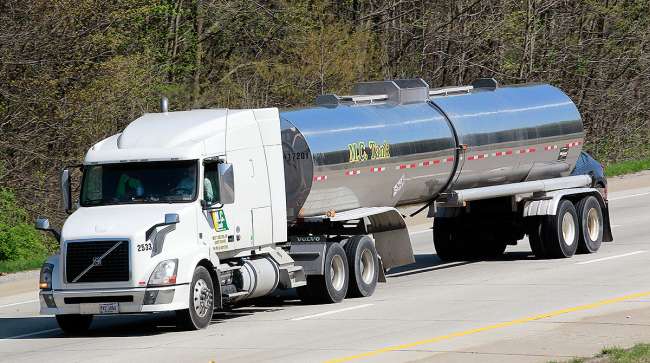Senior Reporter
ATA’s Truck Tonnage Index Falls 1.1% in June

[Stay on top of transportation news: Get TTNews in your inbox.]
Tonnage and several other measurements of trucking’s overall economic health point to less-than-robust growth as 2019 passes the halfway point.
American Trucking Associations’ advanced seasonally adjusted For-Hire Truck Tonnage Index in June inched forward 1.5% to 115.2, the smallest year-over-year percentage gain since April 2017.
“The year-over-year gain was the smallest over the past two years, but the level of freight remains quite high. Tonnage is outperforming other trucking metrics as heavy freight sectors, like tank truck, are witnessing better freight levels than sectors like dry van, which has a lower average weight per load,” said Bob Costello, the federation’s chief economist.
Sequentially, however, the index fell 1.1% in June after falling 4% in May when its reading was 116.5.
“Tonnage continues to show resilience as it posted the 26th year-over-year increase despite falling for the second straight month sequentially,” Costello added.
“Tonnage continues to show resilience as it posted the twenty-sixth year-over-year increase despite falling for the second straight month sequentially. The year-over-year gain was the smallest over the past two years, but the level of freight remains quite high." - @ATAEconBob — American Trucking (@TRUCKINGdotORG) July 23, 2019
The authors of the Cass Freight Index Report also report back-to-back monthly losses. In fact, its June shipments index dropped another 5.3% to 1.18 — marking negative volume seven months in a row. The index fell in May by 6%.
“We repeat our message from last month: The shipments index has gone from ‘warning of a potential slowdown’ to ‘signaling an economic contraction,’” Cass’ June report said. It did recognize that these negative percentages are against extremely tough comparisons.
Cass is a division of St. Louis-based Cass Information Systems, which manages freight audit and payment for transportation companies.
Economist Noel Perry, who follows trucking, said there appears to be evidence the 10-year run of strong economic expansion is starting to fade somewhat. The economy is not recessionary, but it’s slowing, he said.
“When you get late in a recovery — and we are late in the recovery — the economic mix changes more toward services. And so, transportation volume tends to slow, even though the economy is churning out 2.5%, he said, referring to GDP. “But freight growth might be 1%, zero or slightly negative. I think what we are seeing here are the first signs of trouble, and if my forecast is correct and I am pessimistic, right now, we’ll see more trouble. I think we’ll see a recession this time next year.”

Perry
DAT Solutions of Beaverton, Ore., uses three indexes to measure freight volume, monitoring levels for vans, flatbeds and reefers. The June 2019 van index rose 4.4% to 178, compared with last year’s 174. The reefer index climbed 1.3% to 138 from 136 during the same period. The flatbed index jumped 9% to 200 from 184 the year before. The index baseline of 100 equals the number of loads moved in January 2015, as recorded in DAT RateView, a database of rates paid on an average of 3 million loads per month.
But Cass said pricing has declined.
“The weakness in spot market pricing for many transportation services, especially trucking, is consistent with the negative Cass Shipments Index and, along with airfreight and railroad volume data, strengthens our concerns about the economy and the risk of ongoing trade policy disputes,” the Cass report said. “Weakness in commodity prices and the decline in interest rates have joined the chorus of signals calling for an economic contraction.”
Tulsa-Okla.-based Melton Truck Lines specializes in flatbed operations. Chief Financial Officer Robert Ragan said economic conditions for his sector are consistent. “We’re growing our fleet at 5% this year,” he said. “What we’re seeing today is a decent environment.”
A trade agreement between Washington and Beijing would give the industry a shot in the arm, he added.
“Anytime there is uncertainty in terms of tariffs and other things that can be disruptive to our economy, that’s not good,” he said.
In May, China raised tariffs on U.S. goods and a revised $60 billion target list in response to a tariff hike by Washington on $200 billion of Chinese goods. The two nations plan to resume trade negotiations in Shanghai on July 30.
Ragan said he measures his business growth for the flatbed sector using the Institute for Supply Management Index. The June index was 51.7, down from 60 a year ago — and the lowest since October 2016 when it was also 51.7. (Readings below 50 indicate a contraction.)
Economist Rajeev Dhawan, director of Georgia State University’s Economic Forecasting Center said tariffs have become a drag on the economy.
“Softness is there in the economy,” he said.




